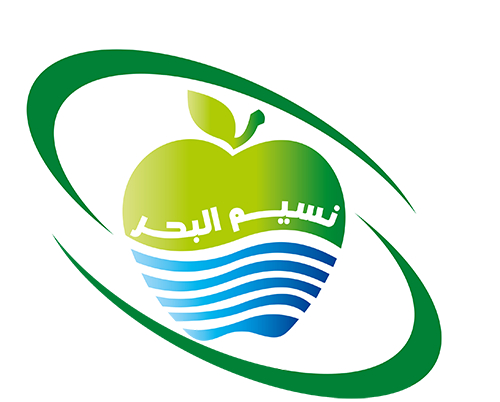Writing Urgent Essays for College
30 مارس، 2023Solved: Dropbox puts a notepad file on the Desktop Dropbox Community
30 مارس، 2023The most common approaches to paperless invoicing like document management systems are not that effective anymore. This involves extracting data automatically, workflow routing, and approval processes that streamlines your operation. They don’t rely on electronic devices for accessibility, which makes them suitable for companies with no strong digital capabilities. Electronic invoices minimize the risk of creating double invoices and payments, contributing to a more accurate financial workflow.
Approvers within your company can view invoices, supporting documents, and comments electronically, streamlining the approval process. Paperless invoice processing is automating your invoice capture process so that you don’t have to scan the invoices and input the data like GL codes. Customer satisfaction and experience are critical factors for businesses to thrive in today’s competitive landscape. Paperless invoicing offers several features that can enhance customer experience, making it a win-win for both businesses and their clients or customers. The production of paper requires vast amounts of water, from the initial stages of pulp creation to the final paper manufacturing process.
The Future of AP is Paperless
Since printing is not what you want, you can email them directly with the in-app feature. Simple and easy-to-understand invoice templates help you get invoice approval quickly and get paid in digital notes. Switching to paperless invoicing has many benefits for your organization. “PaperLess is a valuable Sage add-on solution that manages both your accounting and business documents within one centralised workspace.” AI-powered invoice automation software with anytime, anywhere visibility.
This monotonous task can be time-consuming and arduous, but in the end, it will be well worth the effort. Invoices contain a lot of data, and it is common for errors to occur as this data is input into an accounting program. All it takes is one missed keystroke to throw the ledger balance off and waste precious time as the error is determined and corrected. Remember how we discussed how digitized invoices can be matched against purchase orders to help verify them?
Steps To Switch To Paperless Invoice Process
Staff and customers alike get access to invoices through a dedicated online portal and can view invoice and account statuses in real time. If you’re invoicing your customers through physical channels—like mail—there’s a good chance you’re also receiving payment through similar means—and via physical payment methods like checks. But with finance’s—and your customers’—increasing modernization requests, this really isn’t the right way for you to manage your accounts receivable. You get real-time notifications of customers receiving invoices, opening invoices, missing the due date, and invoice payments.
- The key is to approach this scientifically by understanding different channels and matching those channels with your supplier preferences.
- With traditional paper invoices, it is relatively easy for fraudsters to alter or manipulate the content, such as changing the payment details or amounts.
- It is least effective because a lot of work is involved in receiving, opening, scanning the invoices, and then the data entry.
- After confirmation, they will check the purchase order (PO) to ensure that the values match those on the invoice, and then it is forwarded for approval.
- Solupay Consulting, LLC, d/b/a Versapay, is a registered Independent Sales Organization ofWells Fargo Bank, N.A., Concord, CA, Fifth Third Bank, N.A.
- While there might be a slight learning curve initially, modern platforms like Invoicera are designed to be user-friendly.
Though it might not be surprising, that still does not mean it should happen. And if the supplies never arrive, it could create difficulties in recouping the funds. Though new technology can seem intimidating sometimes, it can also help you be more effective in your personal and professional life, especially when it comes to automating manual processes. Automating time-consuming, everyday tasks is typically safer, more efficient, and faster than performing them manually.
How Can Medius Help with Paperless Invoice Processing?
Furthermore, paperless invoicing allows for faster payment processing. Since invoices can be sent electronically, businesses can receive payments more quickly, leading to improved cash flow. Additionally, electronic invoices can be easily tracked and monitored, providing businesses with real-time visibility into the status of their invoices and outstanding payments. Paperless invoice processing involves taking all the usual accounts payable tasks and switching them from a paper-based form to an electronic or digital format. This means using digital storage and payments and employing invoicing software such as Medius’s AP automation solution to handle these business functions.

Since most companies are going paperless, employees and customers are less resistant to implementing these changes. It might take work to get this new system in place, but the effort will pay off quickly when you have an automated system for invoicing and workflow management. Paperless invoicing—also known as electronic invoicing or e-invoicing—is the process of invoicing your customers or clients digitally. Businesses will use software to generate, send, accept payment for, process, and record each invoice. The paperless invoice approval process lets your customer verify the incoming invoices as soon as they are received.
Storage challenges are one of the issues many small businesses face when it comes to working with paper and pen methods. Many businesses have to keep records for longer periods, and that’s where storage issues come into play. Going paperless means no storing hassle and access to any of the documents you want. It is quite clear why most organizations are switching to a paperless invoice system after knowing the difference between paper and paper-free invoicing.

Make sure to take advantage of options like automated invoice coding and approval routing, as these are vital in increasing efficiency. The approval process can be a massive bottleneck for accounts payable teams. It can be difficult to even find the right person to approve an invoice, much less having to chase them around via email and voicemail to receive it.
